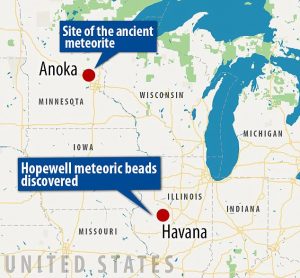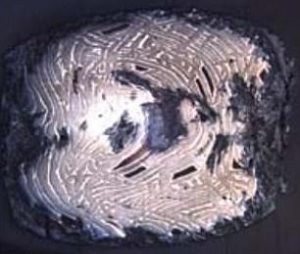Experts revealed that 22 iron beads found in 1945 at a Hopewell grave site in Illinois were crafted from the shard of a meteorite that fell more than 700 kilometres away in Minnesota, United States of America.

Analysis of the beads and the meteorite that fell in Anoka, Minnesota, revealed that they had a matching chemical composition. Using mass spectroscopy to analyse the samples, researchers found several details linking the Hopewell beads to the Anoka meteorite, such as f.ex. content of micrometer-sized bits of iron enriched with nickel. Researchers state, that the similarity in major, minor, and trace element chemistry between Anoka and Havana, the presence of micrometer-sized inclusions of gamma iron in kamacite in both, and the obvious connection via the Mississippi and Illinois Rivers between Anoka and Havana point to the production of the Havana beads from a mass of the Anoka iron.

The beads were found in an ancient grave from the Hopewell culture (200 BC-500 AD). The culture was known for their elaborate earthworks and the use of non-local materials. According to the researchers, meteoric iron is the most exotic raw material used during the Middle Woodland period in Eastern North America. The discovery of the beads in the burial site suggests the deceased was a high-ranking member of the society. The researchers say the iron used in the beads was likely collected by local populations from the Trempealeau Hopewell group, and exchanged to the Havana Hopewell centre where they manufactured it.

(after Daily Mail Online & Smithsonian Institution)